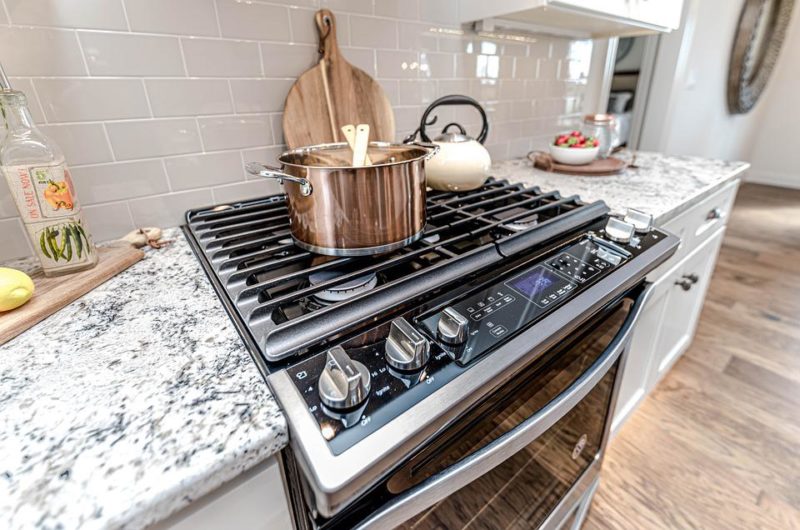The question is: how to detect gas leak in stove? For this purpose, you can use your ears, eyes, nose, and gas detector. You probably prefer grilling on a gas burner if you have one. Compared to an electric stove, a gas fire stove has many benefits. It warms up much quicker, is frequently simpler to operate, and may create more heat.
However, with a gas stove, you must also consider the possibility of gas leakage. Although a gas stove top is usually harmless and long-lasting, a gas leak can occur under certain circumstances. If you notice that the stove has a gas leak, contact the gas company as quickly as feasible.
What are the steps to detecting a gas leak off your burner simultaneously? So, what are your options for fixing it? Find out a little more about the procedure in the following sections! So if you’re interested and want to learn more, keep reading this article at the end; let’s have fun!
If You Suspect A Gas Leak, What Should You Do?
You should contact the gas company right once if you suspect a gas leak in the house, including the stove. The gas may burst if it’s let to leak. Below we have listed a few methods for how to detect gas leak in stove?
Ways To Detect Gas Leak In Stove
You have a few possibilities for detecting a gas leak from your stove. Among them are:
#1. Use your nose
It’s the primary and perhaps most usual method for detecting leakage of gas in a house. All you have to do is use your nose to figure it out. If you’re using a gas stove, you already know that they’re lovely, but gas providers are well conscious of their risks. To allow the gas to be simpler to detect, they add mercaptan. Natural gas has a sulfur or rotten egg stench to it. That is the goal, even if the stench is revolting. Natural gas is odorless and colorless without this ingredient, making it more hazardous. It’s essential to notify the gas company if you notice this stench in your house.
#2. Make use of your ear
It might indicate a gas leak if you hear a whizzing sound from the burner or gas supply. The gas leak is serious if you can detect it. Keep an eye on the source of the noise. A whizzing noise, for instance, might be caused by a variety of other factors. This might indicate an issue with the refrigerant line or even a broken compressor if you notice it nearby your air conditioning system. Suppose you hear a whizzing sound originating from the stove. Calling the gas provider as early as feasible is critical.
#3. Make use of your eyes
You may also inspect your stove closely to check if there is leakage with your eyes. Although natural gas is colorless, you have choices. What hue are the flames whenever you switch on your stove? The fire must be blue if your stove is operating correctly. It indicates that they’re out of gas if the flames are always orange or orange.
That shouldn’t be the case, indicating that the gas is being diverted to another location. You get a leak, whereas if gas is traveling somewhere else. You should have red or orange flames assessed even if you can’t detect them or see them. Remember that this was not an issue, even if the sparks are simply flashing. You must be worried about a gas leak if you’ve never seen blue flames and just see red or orange flames.
#4. Check for gas leaks with a gas leak detector
There is equipment available to check for signs of a gas leak if you don’t trust your senses. For instance, you might want to try out the gas leak sensor to see if anything is amiss. You don’t need to splurge on a gas leak detector because various alternatives are selected. If you need a gas leak detector, you should ask the gas provider for advice. They could be able to steer you on the proper route, and they’ll likely admire you going above and beyond to help them. You may also be interested to know about gas stove best practices to prevent gas leaks.
#5 Make a soap and water solution
It is a tried-and-true method of determining whether or not a gas leak exists. Simply combine soapy water until bubbles appear. Then, pinpoint where you believe a gas leak is coming from. Pour soapy water over the affected area. For the soapy water test, put liquid soap in a water bottle. Sit there and wait after that. This is a positive test if you can observe bubbles forming. As the gas rises from the top, bubbles emerge. You should contact the gas company if the results are positive.
It’s A Wrap!
We hope that we have answered you about how to detect gas leak in stove. Leaks of natural gas constitute a significant threat. Contact the gas company first since they must be addressed soon. A gas leak may be detected in various ways, but it’s typically best to leave it to an expert. Thank you, friends, for being with us at the end! You may also want to read about how to remove burnt sugar on gas stove and how to relight a pilot light on a gas stove.

